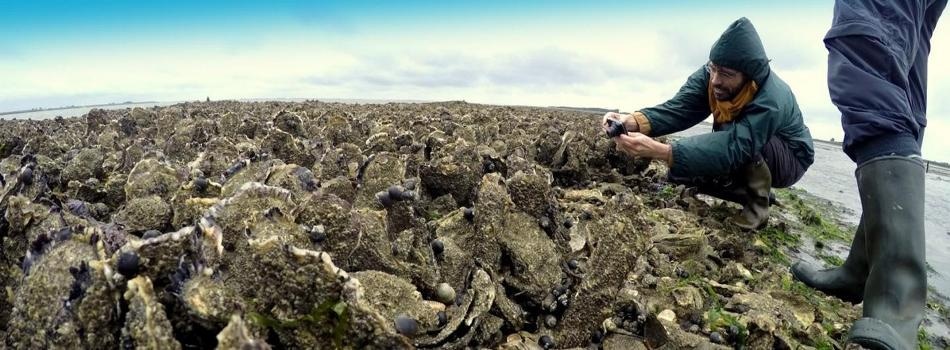Jul 5 2017
Each year, more than 7 million tons of mollusk shells are being discarded as unwanted waste by the seafood industry. The vast majority of these shells are either dumped at sea or thrown in landfills. Dr James Morris and a group of CACHE Scientists from the Royal Belgian Institute of Natural Sciences are examining economically and environmentally sustainable options for these biomaterials.
 Artificial oyster reef in the Netherlands is pictured. Credit: Dr James Morris
Artificial oyster reef in the Netherlands is pictured. Credit: Dr James Morris
Mollusk shells are viewed by the aquaculture and seafood industries as 'nuisance waste' and largely disposed of in landfills. Not only is this an expensive and ecologically harmful practice, it is a colossal waste of potentially useful biomaterials.
Dr James Morris, Royal Belgian Institute of Natural Sciences
Dr Morris proposed an exciting application using discarded shells to restore damaged oyster reefs and help cultivate the growth of new oysters. This would require little effort and money, but could have enormous ecological advantages. "Healthy shellfish populations can have many benefits to the environment: cleaning the water, providing a complex structure for other organisms to call home, and also acting as a coastal protection structure," explains Dr Morris.
Mollusk shells composed of more than 95% calcium carbonate, which is used in many engineering and agricultural applications. Crushed shells can be fed to egg-laying hens as a calcium supplement or used on farmer's fields to control soil acidity. Calcium carbonate is a widely used ingredient in cement mix and is also used in effectively treating wastewater. Unfortunately, the huge amount of the world's calcium carbonate comes from unsustainable and ecologically harmful limestone mining.
Reusing shell waste is a perfect example of a circular economy, particularly as shells are a valuable biomaterial, not only does it improve the sustainability of the aquaculture industry moving forwards, but it can also provide secondary economic benefits to shellfish growers and processors as well.
Dr James Morris, Royal Belgian Institute of Natural Sciences
Dr Morris and his collaborators examined how mollusk shells can serve as a secondary source of calcium carbonate, hoping to provide a more sustainable alternative option to mined limestone. Dr Morris hopes that his work will stress the economic value of recycling the discarded shells back into use.
"The proper disposal procedure for shell waste is in landfill, which costs a lot of money and can be a big burden for shellfish farmers and seafood producers," says Dr Morris, "simply finding a use for shells to avoid taking them to a landfill already has economic value!"